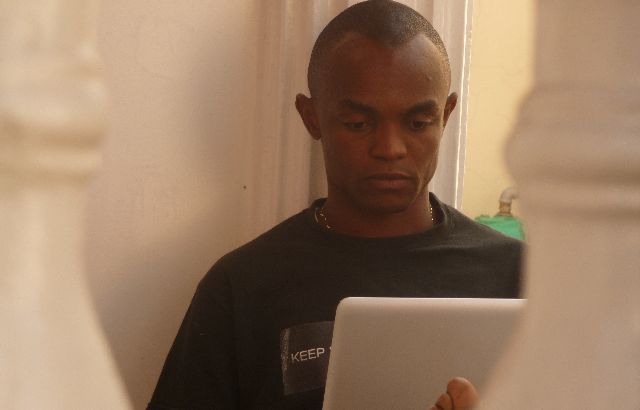
Baudouin Mouanda: Congolese Dreams
We follow this internationally acclaimed photographer as he explores beauty in unlikely places.
Filmmaker: Philippe Cordey
Baudouin Mouanda’s La Sapuers project won him The Young Talent Award at the influential African Photography Biennial, Bamako Encounters, in 2009.
Keep reading
list of 4 itemsCanadian Nobel-winning author Alice Munro dies aged 92
King Charles unveils royal portrait
Cannes film festival hopes for ‘no controversies’ as wars, scandals rage
Since then La Sapuers and his follow-up project, Pavement of Knowledge, have continue to be exhibited around the world.
In Congolese Dreams , we follow Mouanda as he works on his latest project, The Dream. Through this project, he explores beauty in unlikely places – by asking women to pose in the same white wedding dress in different locations – from rubbish dumps to crowded trains.
We see how Mouanda juxtaposes different worlds to create strikingly beautiful pictures, and the obstacles facing photographers in the Congo.
As part of the Generation Elili collective, he is active in promoting Congolese photography and staging exhibitions for the local community, even when everything from infrastructure to finance seems to be against them.
“I look at Africa with positivity,” says Mouanda, “I don’t see Africa from the perspective of people who never came here. I see Africa as a continent that will surprise people tomorrow. I’m sure of it.”
FILMMAKER’S VIEW
By Philippe Cordey
As a cinematographer and director, I was impressed by Baudouin Mouanda’s inventiveness while shooting his upcoming project “Le Rêve”, meaning “The Dream”.
With his model Dodelvine standing inside an overcrowded train that was slowly winding its way through a thick forest in the middle of the night, Baudouin perfectly captured his subject, despite the fact that the train was barely lit.
Seven hours into travelling aboard the famous Congo-Ocean railroad between Brazzaville and Pointe-Noire, about 500 miles apart, we realised we still had a sixteen hour journey ahead of us. It was plenty of time for Baudoin to take the perfect shot and for us to film our scene.
But it was a challenging shoot; our camera operator was holding his camera in one hand and a torch in the other, while our sound engineer struggled to prevent the microphone boom from swinging all over the place and hitting passengers when the train would randomly come to a halt.
The Republic of Congo is known for its frequent power cuts, a problem which extended to our train. I found myself wondering whether the carriage lights would ever come back on. If they did, it would allow Baudouin to resume his photoshoot and we could continue filming him at work. We had to consider whether to use the available light or to wait until dawn. Thankfully we waited until dawn and it turned out to be the most magical moment of our journey – and our film.
Looking back, the train powercut worked to our advantage, as it allowed us to document Baudouin’s use of natural lighting, his ability to reassure his model, his inventive solutions to such problems and the precise way in which he goes about his work.
Watching him work on this train reminded me of the focused, ever-smiling and energetic young Congolese photographer we started filming several weeks earlier.
Back then we were in the German city of Dresden and he was in an empty streetcar photographing another woman wearing the very same dress as Dodelvine, Baudouin’s model on the Conglese train.
We arrived in Dresden in the middle of winter. Despite the cold, Baudouin walked the streets with his white gown tucked into his backpack, asking random women around the city if they would pose for him wearing it. He was afraid of being rejected, especially because the cold weather could put them off, but his smile and enthusiasm worked miracles and he found several great models who happily agreed.
For this particular project, Baudouin asked women to wear a white wedding gown in a variety of locations to explore the idea of beauty in unlikely places. He would position the women in front of his camera in a whole host of colourful, contradictory surroundings and ask them, “Now that you are wearing this wedding gown, what’s your dream?”
They each spoke in turn about their personal feelings and interpretations of their aspirations and dreams. Some women spoke about marriage as an important stage in their lives and others talked about the institution of marriage in modern society.
The real challenge for Baudouin was not only to photograph these women but to incorporate their dreams into his pictures in order to create individual narratives for these women. And to do this he had to work quickly to consider everything that these women said and how it affects his view of them through his camera lens. This was no easy feat, but as we were looking through the photographs, both raw and retouched, I could see the same fantasy and inventiveness in the pictures that we were able to capture on film during Baudouin’s photoshoots.